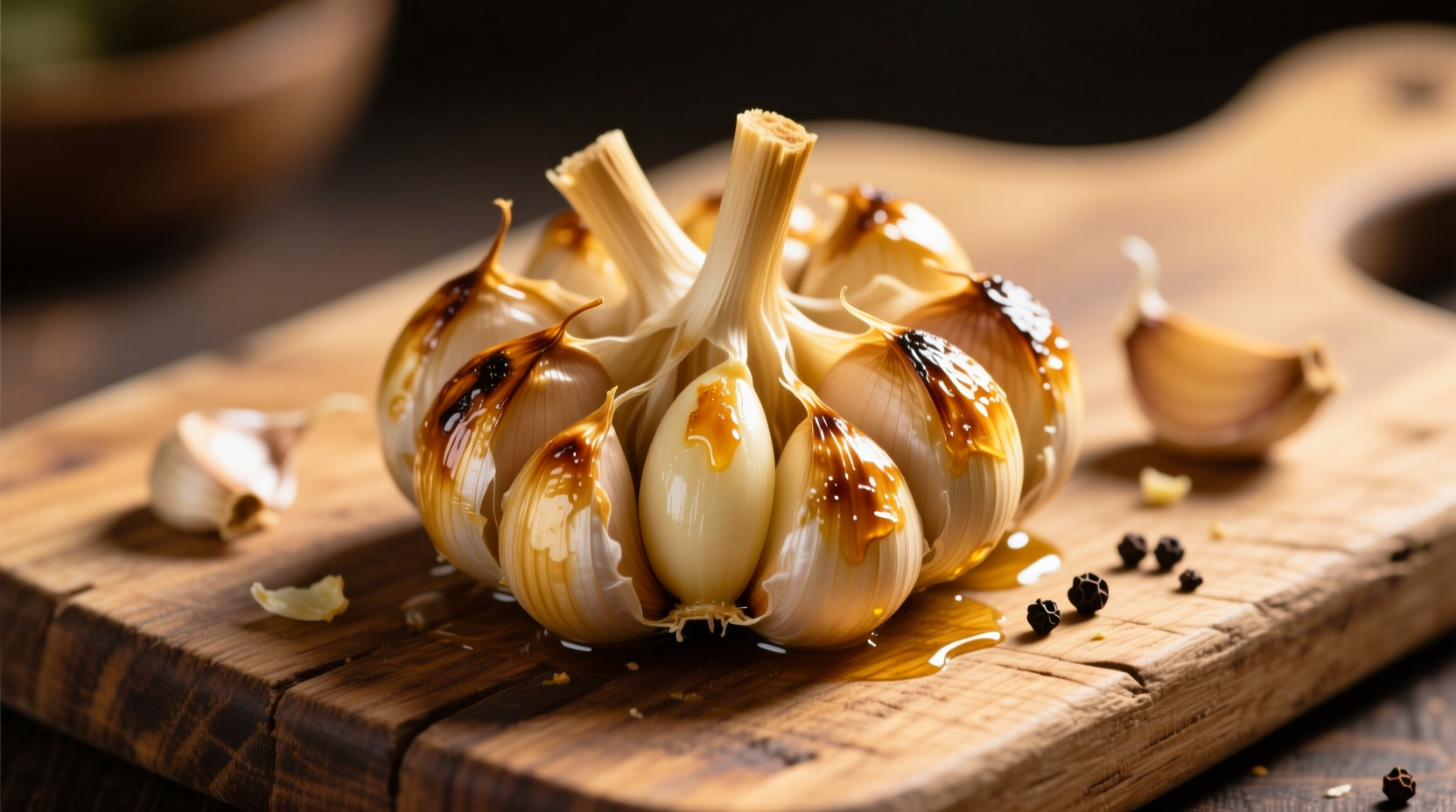Transforming raw garlic into a culinary treasure couldn't be simpler. Professional chefs and home cooks alike rely on oven-roasted garlic for its complex, nutty sweetness that elevates everything from mashed potatoes to salad dressings. Unlike raw garlic's sharp bite, roasted garlic develops deep umami notes through the Maillard reaction—a chemical process that creates hundreds of new flavor compounds when sugars and amino acids interact under heat.
The Science Behind Perfectly Roasted Garlic
When garlic enters your oven, a remarkable transformation occurs. According to research published in the Journal of Agricultural and Food Chemistry, roasting garlic at 400°F triggers enzymatic changes that convert harsh allicin compounds into milder, sweeter thiosulfinates. This process not only mellows the flavor but actually increases antioxidant activity by up to 13% compared to raw garlic, making roasted garlic both more delicious and potentially more beneficial.
| Garlic Form | Flavor Profile | Best Culinary Uses |
|---|---|---|
| Raw garlic | Sharp, pungent, spicy | Salsas, vinaigrettes, quick sauces |
| Roasted garlic | Sweet, nutty, mellow | Spreads, mashed potatoes, pasta sauces |
| Black garlic | Balsamic, tamarind-like | Garnishes, reductions, dessert applications |
Essential Equipment Checklist
You don't need specialized tools for perfect roasted garlic, but these items make the process foolproof:
- Oven thermometer (critical for accurate temperature—USDA Food Safety guidelines recommend verifying oven accuracy)
- Heavy-duty aluminum foil (prevents oil leakage)
- Sharp paring knife (for precise top trimming)
- Quality extra-virgin olive oil (choose cold-pressed for best flavor)
- Small pastry brush (for even oil distribution)
Step-by-Step Roasting Process
Follow these professional chef techniques for consistently perfect results every time:
1. Selecting & Preparing Garlic Heads
Choose firm, plump garlic heads with tight skins—avoid any with sprouting cloves or soft spots. For optimal results, use freshly harvested garlic when available (typically July-October in North America). Trim approximately ¼ inch from the top of each head to expose the cloves, being careful not to cut too deeply.
2. Oil Application Technique
Place each prepared head in the center of a 12x12 inch foil square. Drizzle 1-2 teaspoons of olive oil over the exposed cloves, then use a pastry brush to gently work the oil between cloves. This ensures even roasting and prevents drying. For enhanced flavor, add one of these professional touches:
- Pinch of flaky sea salt
- 1-2 sprigs fresh thyme or rosemary
- Single clove of unpeeled garlic (creates concentrated flavor bombs)
3. Perfect Roasting Conditions
Fold the foil into a sealed packet, ensuring no oil can escape. Place directly on the middle oven rack and roast at 400°F (204°C) for 30-40 minutes. The exact time depends on garlic size:
- Small heads (8-10 cloves): 30 minutes
- Medium heads (10-14 cloves): 35 minutes
- Large heads (14+ cloves): 40 minutes
Don't open the packet early—steam is essential for proper softening. When done, cloves should be deeply golden and yield completely when pressed.
Troubleshooting Common Roasting Issues
Even experienced cooks encounter these challenges. Here's how to fix them:
Bitter or Burnt Garlic
Cause: Oven running too hot or garlic too close to heating element
Solution: Verify oven temperature with a thermometer and place garlic in center of oven. For convection ovens, reduce temperature by 25°F.
Undercooked or Hard Garlic
Cause: Insufficient oil or premature packet opening
Solution: Ensure adequate oil coverage and keep packet sealed throughout cooking. If undercooked, return to oven in 5-minute increments.
Maximizing Your Roasted Garlic
Once roasted, garlic becomes incredibly versatile. Here's how professional chefs use every bit:
Immediate Applications
Squeeze warm cloves directly from their skins into:
- Mashed potatoes (replaces butter for richer flavor)
- Mayonnaise or aioli (creates gourmet spreads)
- Pasta sauces (melts seamlessly into tomato or cream bases)
Storage Techniques
Preserve your roasted garlic using these food safety-approved methods:
- Refrigeration: Store in airtight container with olive oil for up to 10 days (USDA recommends no longer than 7 days for homemade garlic-in-oil)
- Freezing: Freeze whole heads or individual cloves in ice cube trays with oil for up to 6 months
- Drying: Dehydrate at 140°F for 8-10 hours, then grind into powder

Advanced Roasting Variations
Once you've mastered the basic technique, experiment with these professional variations:
Slow-Roasted Garlic (Low & Slow Method)
For even deeper flavor complexity, roast at 300°F for 60-75 minutes. This extended time allows more complex sugar development without caramelization risks. Particularly effective for larger garlic varieties like elephant garlic.
Smoked Roasted Garlic
Add wood chips to your oven (yes, really!) by placing soaked hickory or applewood chips in a foil pouch with ventilation holes on the oven floor. The subtle smoke infusion creates restaurant-quality depth.
Why Oven Roasting Beats Other Methods
While you can roast garlic in air fryers or on stovetops, the conventional oven provides the most consistent results. Unlike air fryers that can create uneven hot spots, ovens maintain steady ambient heat that cooks garlic heads uniformly. Compared to stovetop methods that require constant attention, oven roasting is truly hands-off—perfect for busy home cooks who want professional results without constant monitoring.











 浙公网安备
33010002000092号
浙公网安备
33010002000092号 浙B2-20120091-4
浙B2-20120091-4